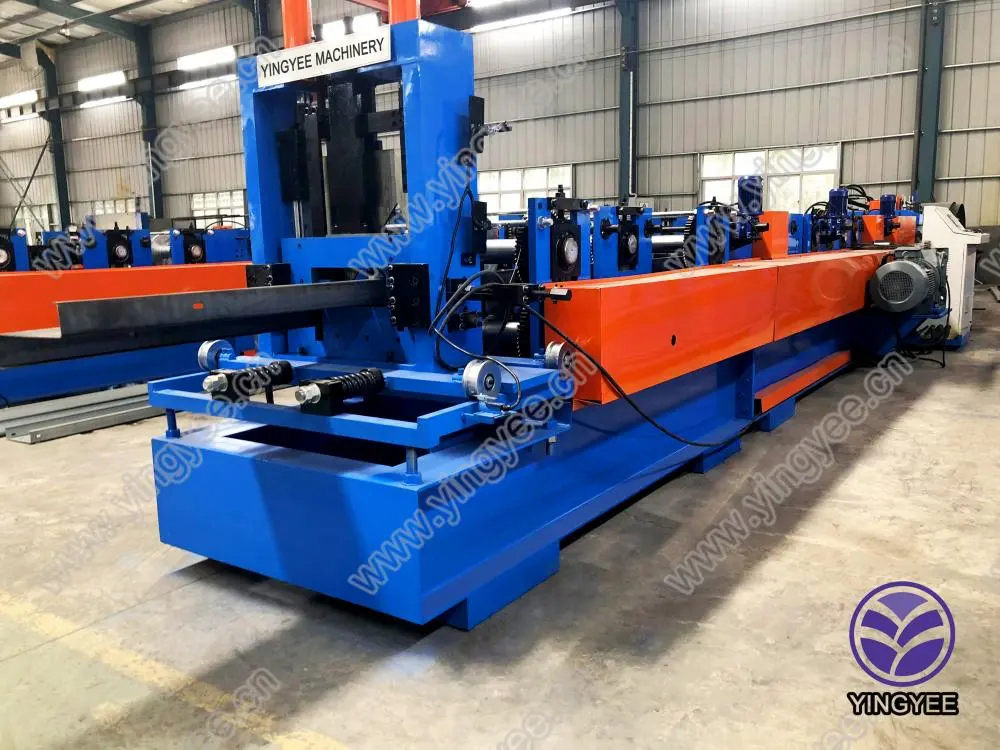
Understanding Gutter Machines A Comprehensive Overview
Gutter machines play a crucial role in the construction and maintenance of residential and commercial buildings. These machines are designed to create seamless gutters that effectively channel water away from the foundation, protecting buildings from water damage and extending their lifespan. In this article, we will explore the functionality, benefits, and types of gutter machines, providing you with an in-depth understanding of this essential equipment.
What is a Gutter Machine?
A gutter machine is a specialized piece of equipment used to fabricate rain gutters on site. Unlike traditional gutters that may require cutting and assembly, gutter machines produce seamless gutters from a continuous coil of metal. This process minimizes the chances of leaks and enhances the overall efficiency of the drainage system. The most common materials used with gutter machines are aluminum, steel, and copper, each offering different advantages in terms of durability and aesthetics.
How Does a Gutter Machine Work?
A gutter machine operates by feeding a coil of metal into the machine, which then shapes the metal into the desired gutter profile. The process typically involves several steps
1. Coil Loading The metal coil is loaded into the machine, which is usually portable and designed for on-site production. 2. Shaping As the coil moves through the machine, it passes through various rollers that gradually shape it into the gutter profile. This shaping can be customized based on the specific requirements of the project.
3. Cutting Once the gutter reaches the desired length, the machine cuts it according to the dimensions specified by the installer. This feature ensures that each segment of gutter fits perfectly.
4. Finishing After cutting, additional components like downspouts and elbows may also be fabricated on-site, making the installation process seamless and efficient.
Benefits of Using a Gutter Machine
1. Efficiency One of the most significant advantages of using a gutter machine is the speed and efficiency it provides. Traditional methods of gutter installation can be time-consuming and require additional labor for cutting and assembling. With a gutter machine, installers can create and install gutters quickly, reducing labor costs and project timelines.
2. Customizability Gutter machines allow for custom gutter profiles that can be tailored to match the architectural specifications of a building. This flexibility is particularly beneficial for projects that demand unique or intricate designs.

3. Quality Assurance Seamless gutters produced by gutter machines are less likely to leak compared to traditional sectional gutters. The continuous flow of metal minimizes joints, which are common points of failure in traditional installations.
4. Portability Many gutter machines are designed to be portable, allowing contractors to transport them directly to job sites. This feature eliminates the need for pre-fabricated gutters and reduces the risk of damage during transport.
5. Cost-Effectiveness By reducing labor costs and minimizing wastage of materials, gutter machines can lead to significant savings for contractors and homeowners alike. The initial investment in a gutter machine can quickly pay off through increased efficiency and reduced material costs.
Types of Gutter Machines
Gutter machines come in various types, each designed for specific applications. Some common types include
1. K-Style Gutter Machines These machines are designed to produce K-style gutters, which are popular in residential construction due to their aesthetic appeal and efficiency.
2. Half-Round Gutter Machines These machines create half-round gutters, often found in historic and commercial buildings. They provide a classic look and are available in various materials.
3. Box Gutter Machines Box gutters are typically found in flat-roofed buildings. These machines allow for the creation of deeper, more substantial gutters designed to handle larger volumes of water.
4. Custom Gutter Machines Some machines are designed to produce specialized gutter profiles, accommodating unique architectural designs and customer requests.
Conclusion
Gutter machines revolutionize the way gutters are produced and installed. Their ability to create seamless, custom gutters on-site makes them an invaluable asset for contractors and builders. With benefits like increased efficiency, reduced labor costs, and enhanced quality, investing in a gutter machine can lead to substantial advantages in the competitive construction industry. As construction technology continues to evolve, gutter machines will undoubtedly play a significant role in ensuring that buildings remain protected from the elements while maintaining their aesthetic appeal.